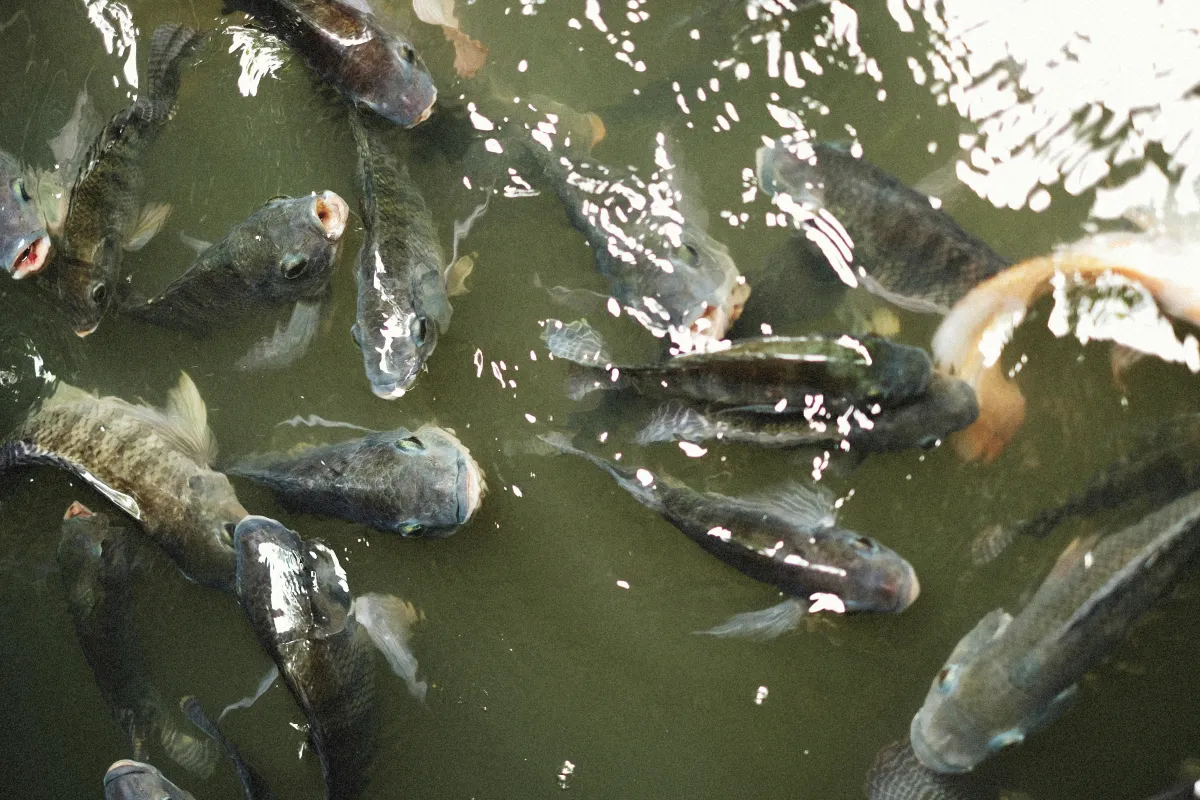
What is Aquaponics?
What is Aquaponics?
Aquaponics is a sustainable agricultural practice that combines aquaculture (raising fish) and hydroponics (growing plants in water) into a symbiotic environment. At its core, aquaponics leverages the natural biological processes of fish and plants to create a closed-loop system that benefits both organisms and the environment. This innovative method of farming has gained popularity in recent years, especially among homesteaders and small-scale farmers, due to its efficiency, sustainability, and the ability to produce a variety of crops and fish in a relatively small space.
The Basics of Aquaponics
In an aquaponics system, fish are raised in tanks, and their waste provides an organic nutrient source for plants grown hydroponically. The key to this system is the nitrogen cycle, where fish waste, primarily ammonia, is converted by beneficial bacteria into nitrites and then into nitrates, which are utilized by plants as a nutrient source. The plants, in turn, filter and purify the water, which is recirculated back to the fish tanks, creating a continuous and balanced ecosystem.
Components of an Aquaponics System
An aquaponics system typically consists of several key components:
Fish Tank: This is where the fish are raised. Common species used in aquaponics include tilapia, trout, catfish, and ornamental fish like koi. The choice of fish depends on factors such as water temperature, the desired growth rate, and personal preference.
Grow Beds: These are containers where plants are cultivated. The grow beds are filled with a growing medium like gravel, clay pellets, or coconut coir, which supports the plants and provides a surface for beneficial bacteria to colonize.
Biofilter: This is where the conversion of fish waste occurs. Beneficial bacteria, known as nitrifying bacteria, break down ammonia into nitrites and then into nitrates, making the nutrients available to the plants.
Sump Tank: This optional component collects and pumps water back to the fish tank. It helps maintain a consistent water level and ensures efficient water circulation throughout the system.
Plumbing and Pumps: These facilitate the movement of water between the fish tank, grow beds, and sump tank. Proper plumbing ensures that water flows smoothly and that fish waste is effectively delivered to the plants.
The Benefits of Aquaponics
Aquaponics offers numerous benefits, making it an attractive option for homesteaders and small-scale farmers:
Sustainability: Aquaponics is an environmentally friendly method of farming that uses significantly less water than traditional soil-based agriculture. The closed-loop system recycles water, reducing the need for constant water input.
Space Efficiency: Aquaponics systems can be set up vertically, making them ideal for urban environments or areas with limited space. This allows for high-density farming and maximizes the use of available space.
Chemical-Free Farming: Since the system relies on natural processes, there is no need for chemical fertilizers or pesticides. This results in healthier, organic produce and a safer environment for both the fish and plants.
Year-Round Production: Aquaponics systems can be set up indoors or in greenhouses, allowing for year-round cultivation regardless of external weather conditions. This ensures a consistent supply of fresh produce and fish.
Reduced Environmental Impact: By minimizing water usage, eliminating chemical runoff, and reducing the carbon footprint associated with transporting produce, aquaponics contributes to a more sustainable and eco-friendly agricultural practice.
Setting Up an Aquaponics System
Setting up an aquaponics system on your minifarm requires careful planning and consideration. Here are some essential steps to get you started:
Determine Your Goals: Decide what you want to achieve with your aquaponics system. Are you looking to produce fresh vegetables for your family, raise fish for consumption, or create a sustainable business model? Your goals will influence the design and scale of your system.
Choose the Right Location: Select a location that receives adequate sunlight for plant growth. If you plan to set up your system indoors or in a greenhouse, ensure you have access to electricity for pumps and supplemental lighting if needed.
Select Your Fish and Plants: Research suitable fish species and plants that thrive in aquaponics systems. Consider factors such as water temperature, pH levels, and the compatibility of different species. Common plants include leafy greens, herbs, tomatoes, and peppers.
Design Your System: Decide on the type of aquaponics system that suits your needs. The three main types are media-based, nutrient film technique (NFT), and deep water culture (DWC). Each has its advantages and considerations, so choose the one that aligns with your goals and available resources.
Set Up the Components: Install the fish tank, grow beds, biofilter, and plumbing. Ensure proper water flow and aeration to support both the fish and plants. It's essential to create a balanced system where the waste produced by the fish is adequately processed by the plants and bacteria.
Cycle Your System: Before adding fish and plants, cycle your system to establish the beneficial bacteria needed for the nitrogen cycle. This can be done by adding ammonia to the water and monitoring the levels until the bacteria convert it into nitrates.
Monitor and Maintain: Regularly test water parameters such as pH, ammonia, nitrite, and nitrate levels to ensure a healthy environment for both fish and plants. Feed the fish appropriately and monitor their health. Prune and harvest plants as needed to maintain optimal growth.
Aquaponics on KrisandLarry.com's Minifarm
At KrisandLarry.com, we have embraced aquaponics as a key component of our homesteading lifestyle. Our aquaponics system has allowed us to produce fresh, organic vegetables and fish, contributing to our goal of self-sufficiency and sustainability. Here’s a glimpse into how we’ve set up and maintain our system:
Our Setup
Fish Selection: We chose tilapia for their fast growth rate and resilience. They thrive in our climate and provide a steady source of protein.
Plant Varieties: We grow a variety of leafy greens, such as lettuce and spinach, along with herbs like basil and mint. We also experiment with tomatoes and peppers, which have thrived in our setup.
System Design: Our media-based system uses gravel as the growing medium, providing excellent support for plants and a large surface area for beneficial bacteria. The fish tank is connected to several grow beds, with water flowing continuously between them.
Maintenance and Monitoring
Regular monitoring is crucial to maintaining the balance in our aquaponics system. We test the water weekly to ensure optimal conditions for our fish and plants. Any fluctuations in pH or nutrient levels are addressed promptly to prevent stress on the system.
We feed our tilapia a balanced diet and monitor their health daily. Any signs of disease or stress are taken seriously, and we take immediate action to address the issue. Our plants receive plenty of natural sunlight, and we supplement with grow lights during the shorter days of winter.
Challenges and Solutions
Like any farming method, aquaponics comes with its challenges. We've faced issues such as algae growth, which can be managed by controlling light exposure and maintaining clean grow beds. Occasionally, we encounter pest problems, which we address with natural pest control methods to keep our produce chemical-free.
The Rewards
The rewards of aquaponics on our minifarm have been immense. We enjoy a constant supply of fresh, organic produce and fish, contributing to our family's health and well-being. The system is not only productive but also serves as an educational tool for our children, teaching them about sustainable farming and the importance of ecological balance.
Conclusion
Aquaponics is a revolutionary approach to farming that combines the best aspects of aquaculture and hydroponics into a single, sustainable system. By creating a balanced ecosystem where fish and plants thrive together, aquaponics offers a viable solution for those looking to produce their food in an environmentally friendly manner. Whether you're a seasoned homesteader or just starting your journey, aquaponics can be a rewarding addition to your farming practices, providing fresh, organic produce and fish year-round.
At KrisandLarry.com, our aquaponics system has become an integral part of our homesteading lifestyle, embodying our commitment to sustainability and self-sufficiency. We encourage you to explore the world of aquaponics and discover the benefits it can bring to your minifarm or homestead. Happy farming!
About Us
We are a large, Christian, homeschooling homesteading family from Chino Valley, Arizona. (2 parents - Kris and Larry, 8 kids, some not so little any more and 3 spouses of the kids)
We have a fun Youtube channel, a blog, and a homestead shop with goat milk soap and lotion, signs, jewelry & more.
Copyright© 2025 KrisandLarry - All Rights Reserved.

Facebook
Instagram
Youtube
TikTok